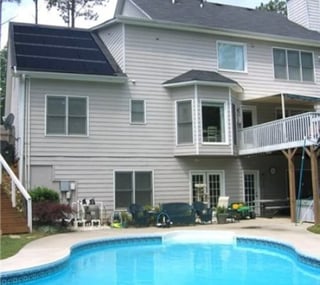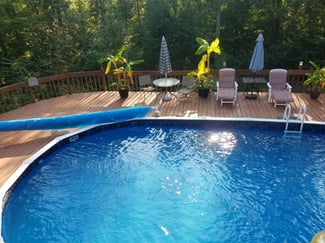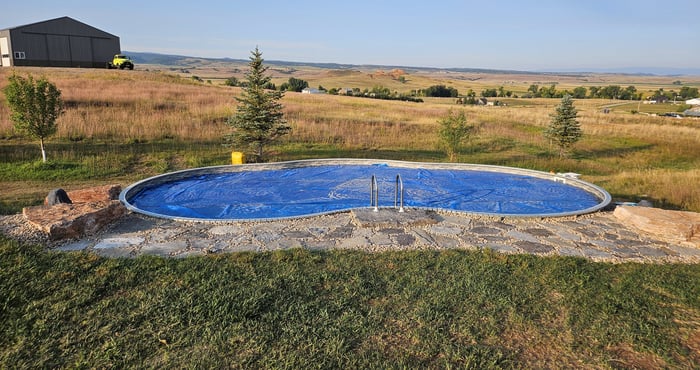How Long Does It Take to Heat Your Swimming Pool?
Whether you’re getting ready for a weekend swim or planning around a special occasion, knowing how long it takes to heat your pool can make or break your timing. The truth is, there’s no universal answer—heating time depends on several factors including the size of your pool, the efficiency of your heating system, and even the weather. In this guide, we’ll walk through what impacts heating speed, how different systems compare, and what you can do to warm your pool faster and more effectively.
Key Factors Affecting Pool Heating Time
- Pool volume: Larger pools take longer to heat simply because there’s more water to warm. For example, a 40-foot inground pool holds nearly twice the volume of a typical 24-foot above-ground pool.
- Desired temperature increase: The bigger the gap between the current water temperature and your target, the longer the heat-up time. A 15-degree rise will take significantly more time—and energy—than a 5-degree bump.
- Outdoor air and ground temperature: Cool air, wind, and cold ground surfaces all draw heat from the pool, especially overnight. These environmental factors directly affect how hard your heater has to work.
- Heater efficiency: Gas heaters warm water quickly but tend to be less efficient over time. Heat pumps work more slowly but offer better long-term energy savings, especially in warmer climates.
- Heater size (BTU rating): A properly sized heater shortens heating time significantly. Undersized units may run longer without ever fully reaching the desired temperature.
- Use of a pool cover: Up to 70% of heat loss occurs through evaporation. A cover helps trap heat, reducing energy use and speeding up the heating process.
- Water circulation and flow: Good water movement ensures the heated water is distributed evenly, making the entire system more efficient and reducing hot or cold spots.
- Landscape and structural elements: Trees, shade sails, fencing, and walls can block sunlight and cooling breezes—sometimes helping, sometimes hurting—depending on placement and season.
Heating Methods and Their Efficiency
| Heating method | Typical efficiency | Speed | Fuel/Operating cost | Up-front cost | Environmental impact |
| Natural-gas heater | 80 - 84% | 1.5 - 2.7 | High (fuel price volatile) | Moderate | Moderate CO₂ |
| Propane heater | 80% | 1.0 - 2.5 | Highest (≈4 gal/hr @ 400k BTU) | Moderate | Higher CO₂ |
| Electric resistance | ~100% (at unit) | 0.8 - 1.2 | High (kWh-based) | Low | Depends on grid mix |
| Electric heat pump | 300 – 500% (COP 3-5) | 0.25 - 0.5 | Low-Medium | High | Low direct emissions |
| Solar thermal panels | N/A | Varies 5-10°F/day | Minimal | Moderate-High | Lowest |
Pool Heater Size Chart and BTU Guide
Choosing the right heater size is the fastest way to shorten warm-up time and keep operating costs in check. Professionals calculate load based on surface area, wind exposure, and climate, but an easy rule for gas heaters is to target at least a 1 – 1.5 °F rise per hour. Sizing up by one step gives you a welcome buffer on chilly spring and fall days, so you’re not waiting around for the water to reach a comfortable temperature.
| Pool size (approx.) | Volume (gallons) | Recommended BTU | Estimated °F rise/hr* |
| 16’ × 32’ rectangle | 18,000 | 250,000 | 1.3 |
| 18’ × 36’ rectangle | 24,000 | 350,000 | 1.4 |
| 20’ × 40’ rectangle | 30,000 | 400,000 | 1.2 |
*Estimates assume a gas heater, mild outdoor conditions, use of a pool cover, and proper water circulation. Actual performance will vary with weather, installation, and maintenance.
Average Time for Heating a Pool
Heating times vary widely depending on your equipment and conditions, but here’s what you can expect in typical scenarios. A 400,000 BTU gas heater, correctly sized for a 20,000-gallon pool, can raise the water temperature by 12°F in about 6 to 8 hours under moderate weather and with a pool cover.
If you’re using an electric heat pump, that same temperature increase could take 24 to 36 hours, though you'll benefit from significantly lower operating costs.
For above-ground pools equipped with smaller heaters (between 55,000 and 130,000 BTUs), the same temperature boost may take anywhere from 1 to 3 days, especially if the pool is uncovered and exposed to wind.
How to Heat Your Pool Fast: Effective Tips
- Go slightly larger on heater size: Choosing a heater that’s one size above the minimum recommendation can reduce heating time significantly—especially useful when you’re short on time or entertaining.
- Use a solar blanket: A simple solar cover can help retain 3–5 °F of heat overnight by preventing evaporation, making your heater’s job easier in the morning.
- Align with daylight hours: Run your heating system from late morning through afternoon to take advantage of natural solar warmth during peak sunlight hours.
- Maximize circulation during heating: Set your main pump to high speed while heating to ensure cold water is consistently moving across the heat exchanger for more even, efficient warming.
- Limit water features during heating: Jets, fountains, and waterfalls increase surface area and evaporation, which can slow down heating. Keep them off until the pool reaches your target temperature.
- Reduce wind exposure: Installing hedges, privacy screens, or windbreaks around the pool area can help prevent heat loss from wind, especially in open or elevated yards.
- Keep water chemistry balanced: Properly maintained chemical levels prevent scaling and buildup inside your heater, which helps maintain efficiency and prolongs the life of the system.
The Impact of Pool Covers on Heating Time
Cost-Effective Strategies for Pool Heating
- Combine a heat pump with solar panels: Use solar heating to provide a free temperature boost during the day, then rely on a heat pump to maintain steady warmth with minimal energy cost.

- Take advantage of off-peak electricity rates: In areas with time-of-use (TOU) billing, schedule electric heaters to run during off-peak hours to reduce your utility expenses without sacrificing comfort. Note that for the majority of customers on a standard flat-rate plan, running a heater at night is actually less efficient due to colder ambient temperatures and greater heat loss.
- Offset energy use with renewables: Installing rooftop solar panels or other renewable energy systems can significantly lower long-term operating costs by powering your heater with clean energy.
- Use smart automation controls: Pool automation systems can optimize heater runtimes, warming your pool only when needed, helping reduce waste and overuse.
- Stick to regular maintenance: Seasonal inspections and maintenance—like cleaning burners, checking refrigerant levels, and replacing worn parts—keep your heating system running at peak efficiency year-round.
How Long Does It Take to Heat a Pool? - Frequently Asked Questions
How long does it take for a pool to heat up naturally?
- Without a heater, a pool can warm by 1–2°F per sunny day, assuming good sun exposure and no wind. Overcast weather, wind, or cool nights can slow this significantly.
Is it quicker to initially heat a new pool or reheat a cool one?
- Reheating is generally faster. Once the pool structure has been warmed, it holds residual heat, reducing the energy and time needed to reach your target temperature.
How does weather affect pool heating times?
- Wind, low humidity, and cool ambient temperatures all draw heat from the water. These factors increase evaporation and can double the time it takes to heat your pool.
Does running jets or water features affect heating time?
- Yes, they increase evaporation and surface cooling. It’s best to turn off fountains, jets, and waterfalls during the heating process for faster results.
Is it more efficient to heat a pool at night or during the day?
- Heating during the day is more efficient. Warmer air and sunlight reduce the gap between water temperature and your goal, easing the workload on your heater.






.jpg?width=700&name=Royal%20Swimming%20Pools%20INstallatin%20Team%20(9).jpg)
